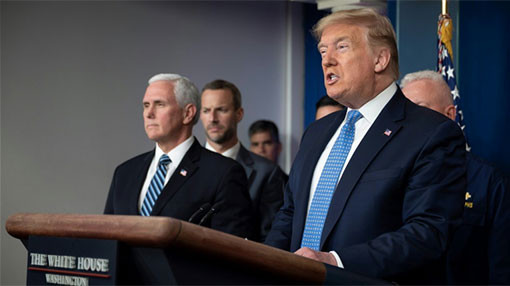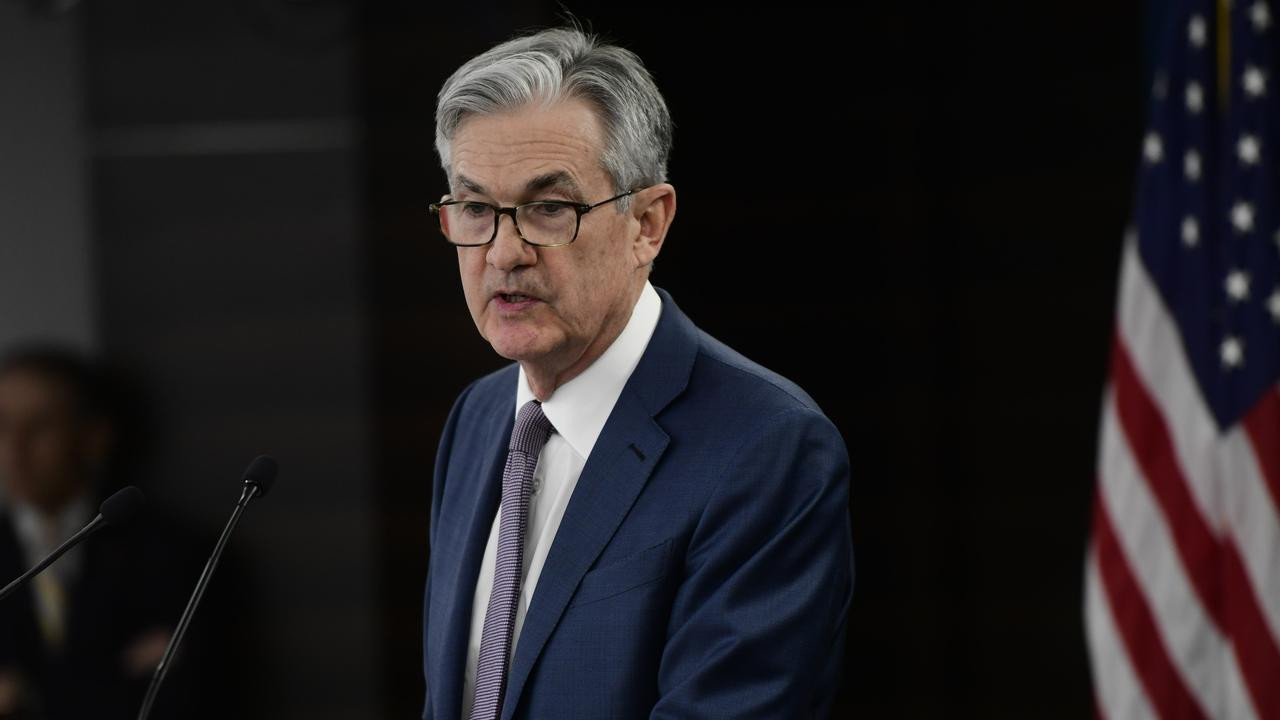After its two-day meeting in Washington, the Fed’s interest rate setting committee decided in an 11-1 vote to bring its key lending rate down to a range between 4.75 and 5 per cent.
Financial markets had been confident of a rate cut, the Fed’s first since the early part of 2020 when it took rates down to zero in a bid to deal with the COVID-19 pandemic. It had started lifting rates in March 2022 before in July last year taking them to their highest level since just before the global financial crisis.
But the half percentage point cut caught markets and many economists by surprise.
Federal Reserve chairman Jerome Powell, in his post-decision press conference, said the bank’s “recalibration” of interest rate settings should ensure strength across both the economy and America’s jobs market.
US Economy
More interest rate cuts are likely. The Fed expects a lending rate of about 4.4 per cent by the end of this year and about 3.4 per cent by the end of 2025.
Powell said the larger-than-expected half percentage point rate cut gave the bank options as it dealt with changes in the economy.
“We can make a good strong start,” he said.
“We can go quicker if that’s appropriate, we can go slower if that’s appropriate, we can pause if that’s appropriate.”
Implications for Australia
Reserve Bank governor Michele Bullock has attempted to push back expectations of a near-term rate cut in Australia.
But ahead of the decision, financial markets in Australia put the chance of a rate cut at the RBA’s December meeting at 97 per cent. The same markets have another four cuts priced-in by the end of next year which, if it were to occur, would take official interest rates down to 3.1 per cent.
The larger-than-expected cut by the Federal Reserve had an immediate impact on global currency markets with the US dollar losing value against most major currencies.
The Australian dollar jumped half a cent on the announcement, taking it above US68 cents. A stronger Australian dollar will help to push down the prices of imported goods, aiding in the RBA’s efforts to bring down inflation.
Ahead of the announcement, economists at both Westpac and the Commonwealth Bank said they expect next week’s monthly inflation figures covering August to show a fall in prices. They are forecasting the annual rate of inflation to fall to 2.7 per cent.
RBA’s Stance
The RBA was later than other central banks in starting to lift interest rates which it did in May 2022. Australia’s cash rate, at 4.35 per cent, is still lower than the lending rates in the US, New Zealand and Britain while Canada’s most recent cut took its interest rates down to 4.25 per cent.
In recent months, RBA governor Michele Bullock has acknowledged that Australia is lagging the US in the cycle and has repeatedly said it’s unlikely the RBA will cut rates this year.
“At the moment, interest rates in the United States are higher than us. We’ve been criticised for that, in fact,” she said in August.
The Reserve Bank has kept rates steady at 4.35 per cent for another six weeks, amid a dramatic spike in volatility in financial and stock markets.
“We’ve been criticised by some people saying our interest rates should be … near where the United States ones are.
“But we’ve chosen ... very deliberately to try and bring inflation down while not turning the economy into a recession and spiking unemployment. That’s been our strategy,” she said.
How will it impact the Australian Economy?
The cut will have implications for Australia’s economy.
It means the Reserve Bank’s cash rate target, which sits at 4.35 per cent, will be relatively stronger compared to US interest rates.
Keeping other things equal, that could see the value of the Australian dollar rise compared to the US dollar.
Rate cuts by the US Federal Reserve and other central banks will create a near-irresistible pressure for Australia’s Reserve Bank to follow, potentially very soon.
It would also have implications for investment and trade, and for Australians looking to travel overseas.
However, a lot will depend on how US Fed officials communicate their reasons for cutting rates.
“A 0.5 percentage point cut that scares markets about US economic prospects could increase the [value of the] US dollar because it is a safe haven currency,” said Carol Kong, a Commonwealth Bank currency strategist.
“However, a 0.5 percentage point cut that eases concerns about US economic prospects could undermine the US dollar.”
Market Reactions
The Fed’s move has political ramifications. Donald Trump, who has signalled a more interventionist approach to America’s central bank, has previously warned the Fed against a pre-election day rate cut.
Powell said this was the fourth time during his time at a Fed where a rate decision had been made during a presidential election.
He said the election had not even been discussed, noting that countries around the world that had central banks free of government interference had lower rates of inflation.
“It’s a good institutional arrangement that has been for the public,” he said.
The Fed now joins the Bank of Canada and the Bank of England, which meets on Thursday, among the world’s large central banks to start cutting interest rates. The Reserve Bank of New Zealand has also started cutting rates.
What Investors Should Do
With the US Federal Reserve set to cut rates on Wednesday (although by how much is still up for debate), analysts at investment bank Macquarie have released a research paper on what an eventual Reserve Bank of Australia (RBA) cut could mean for the ASX.
In addition, if the US market cycle moves into a downturn, Macquarie analysts said investors should prepare for a period of negative returns on the ASX - even if the RBA cuts interest rates.
Sectors to Watch
But it’s not all bad news - some sectors do outperform on RBA rate cuts.
Macquarie found that, since the early 1990s - when the RBA shifted towards inflation targeting - asset class returns have favoured bonds and property markets over equities, the Australian Dollar, and commodities.
In each of the last seven cases, bonds have averaged a total return of 7.7% (and have delivered a positive return post the beginning of the RBA's easing cycles).
In addition, Aussie homes have performed strongly on the back of rate cuts (except for a small fall after a cut in the 1990s). Analysts believe that rate cuts could improve affordability while also supporting prices, given mortgage rates would ease.
Analysts also have a negative outlook on the Australian Dollar and Commodities - noting that the dollar tends to weaken after the RBA starts easing, and in an environment of slowing global growth (which is why central banks would cut) commodity prices tend to underperform.
Macquarie’s Recommendations
Macquarie analysts found that ASX sector returns followed their US counterparts following an RBA or Fed rate cut, pointing to five sectors, in particular, that have typically outperformed in the first year after central bank cuts.
Construction materials have historically been the best-performing sector - with Macquarie adding James Hardie (ASX: JHX) to the portfolio with this in mind. Analysts believe this aligns with rising home prices on RBA cuts.
They also pointed to sectors with defensive earnings, such as consumer staples and healthcare companies as key outperformers in easing cycles. These have also typically been the best-performing sectors in the US after the Fed's first rate cut. Macquarie's portfolio is overweight CSL (ASX: CSL), ResMed (ASX: RMD), Coles (ASX: COL) and Woolworths (ASX: WOW) to benefit from this.
Analysts also noted that gold stocks also tend to perform in the 12 months after the RBA eases - supported by falling bond yields. For exposure to gold, Macquarie has positions in Newmont Corporation (ASX: NEM) and Northern Star Resources (ASX: NST).
In addition, financial services have been a strong performer in Australia post an RBA cut, given that stocks in the capital markets sub-sector tend to benefit from rate cuts and lower bond yields, analysts said. Macquarie has increased its position in Block (ASX: SQ2) with this in mind.
The Outlook
The Fed’s move is a significant development for the global economy, and it will have implications for Australia. While the RBA has indicated that it is unlikely to cut rates this year, the pressure is mounting for a change in course.
As the world’s economies navigate a period of uncertainty, investors should be prepared for volatility and seek out sectors that are likely to perform well in an easing environment. With interest rates expected to remain low for the foreseeable future, it is a time for investors to be cautious but also strategic in their approach.
What’s Next
The next few months will be crucial for the Australian economy as the RBA weighs its options in light of the US Fed’s rate cut. Investors should keep a close eye on the RBA’s statements and economic data, and consult with financial advisors to develop a strategy that is right for them. With the right approach, investors can position themselves to benefit from the opportunities that lie ahead.



















